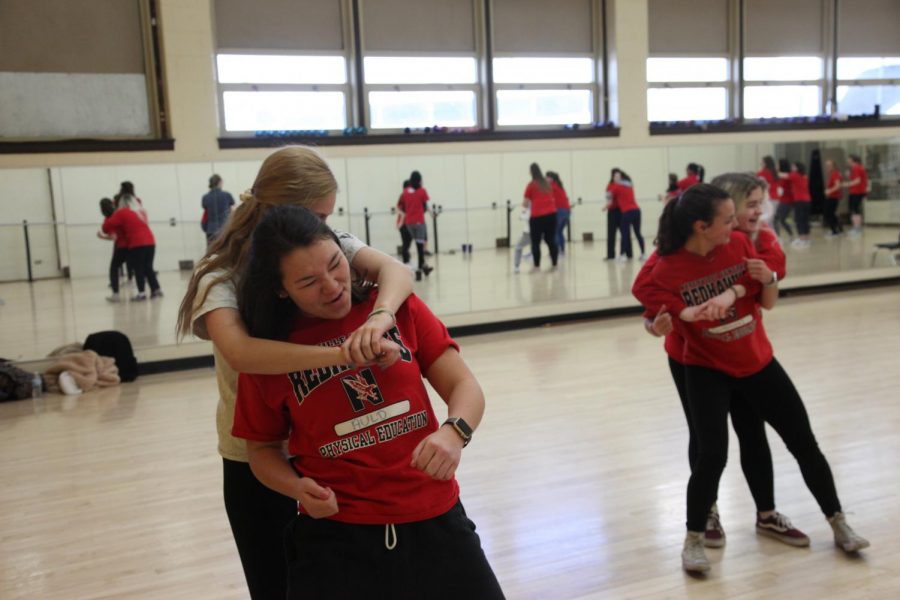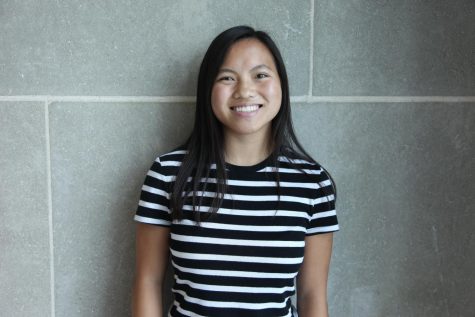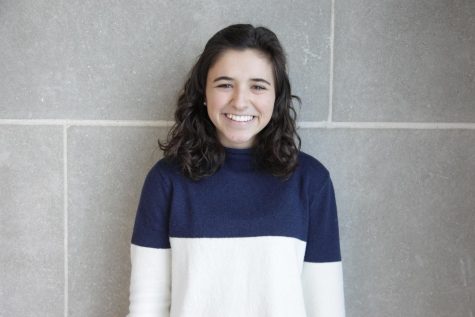Self-defense courses help students develop confidence, awareness in preparation for college
Seniors Julia Tung and Emilie Mineo defend themselves in a simulated attack. “I feel much more prepared and confident heading off to college next year,” Tung said. “This class has taught me a lot of helpful self-defense techniques.”
March 19, 2019
Naperville Central’s physical education department developed their own self-defense classes due to increasing interest in similar courses.
“In 2004-5, there was a group that would come in and teach self-defense,” said Neil Duncan, instructional coordinator of physical education, health and drivers education. “It was based on martial arts and it started there. We would charge kids $20 for the class and it would be for about two weeks.”
Central girls had the opportunity to take this short class and learn different self-defense techniques from Michael Eichenberg, owner of Warriors Edge Martial Arts. He originally taught the girls self-defense by himself, but later brought his wife Michelle to help as well. However about three years ago, the company’s prices were higher than the school wanted to pay.
“We saw a huge need and desire for it,” Duncan said. “We looked at it like, well, what if we become the instructors?”
The girls self-defense class was implemented right away. In the past couple of years, a class for boys has followed.
Both classes’ curriculum is based off of R.A.D systems. It stands for Rape Aggression Defense for the girls’ class and Resistance Aggression with Defense for the boys’.
The girls’ class focuses on having confidence and a good self-esteem. The unit starts off with time in the classroom, discussing and journaling the mental aspects of self-defense. Afterwords, the class moves to the gym to learn the physical aspects of self-defense. The class finishes up with a mock-trial to apply what they have learned to the law. The self-defense class is about four months long.
“Women’s has an empowerment type feel,” Duncan said. “We want to encourage our women to be strong. They get to use their voice, strength, power and speed to escape. Escape is always what we’re shooting for.”
Senior Emma Susin agrees.
“I think it’s a really empowering environment and it’s a good place to learn,” Susin said.
The boys’ class is less physical and incorporates more teaching and discussion.
“Guys tend to be more aggressive and confrontational and that is a stereotype, but that is a general scenario,” Duncan said. “They work on trying to de-escalate, try to leave the room and not confront. For the guys, there’s little or no aggressive or physical components.”
The boys cover the principles of self-defense and the legality of people’s actions in a four-.week curriculum.
“I like that [the boys] learn about the law as far as what you can do and can’t do to defend yourself,” physical education teacher Noah Fitzenreider said. “Not a lot of them know legally what they can do to defend themselves. I think [this class] is important because a lot of them are turning 18 soon or just turned 18 and a lot of laws change once you turn 18. I don’t know any other class that teaches [this].”
Despite the many differences between the boys and girls self-defense classes, teachers come together in their recognition of the influence stereotypes and gender roles play in self-defense.
“They both work very diligently in the understanding, philosophy and psychology in what happens with different genders and how perceptions and social media/norms can have different influences [on people],” Duncan said.
Senior Sam Bohnstedt agrees that he has learned a lot from the course.
“I thought it was a pretty helpful class,” Bohnstedt said. “Some of the rules I was pretty surprised about, like how you’re not suppose to engage when there’s a threat. It’s an interesting class and if you’re going through the regular PE program, I would recommend it.”
Physical education teacher Kristen Anderson thinks statistics show why self-defense is important.
“Statistics state one in five women and one in 10 men get sexually assaulted,” Anderson said. “You take drivers ed knowing you might get in a wreck, you’re taking self-defense knowing you might get attacked. You just need to be ready. It’s your seatbelt.”
However, Anderson feels as though there is a large difference between how boys and girls view self-defense and its importance.
“Girls wake up and think at least once in a day ‘I hope I don’t get raped or sexually assaulted,’” Anderson said. “[The] apprehension behind it is that boys don’t want to talk about their feelings, especially with their teacher, [whereas] girls are very open to talking about feelings, beliefs and passions. Girls are open.”
Anderson believes that this not only applies to learning self-defense, but the larger problem of sexual assault in the world.
“[There is a] stigma [that] men have to be strong and it happen to men, [that assault] is a women’s problem,” Anderson said. “[However,] after teaching girls, you realize how vulnerable boys actually are. They do not report, so you know the number [one in 10] is bigger.”










Amy Saunders • Jun 13, 2022 at 7:35 pm
Hey! My sister-in-law is going to spend the next few weeks in Texas and for some reason she feels like the place is unsafe for her. When you said that de-escalation techniques are some of the things we must know when learning self defense so we know the right approach to use based on the situation we’re facing, it opened my mind. She should surely take note of this tip so she can stay safe and vigilant after this. https://combatfitnessusa.com/self-defense-solution/